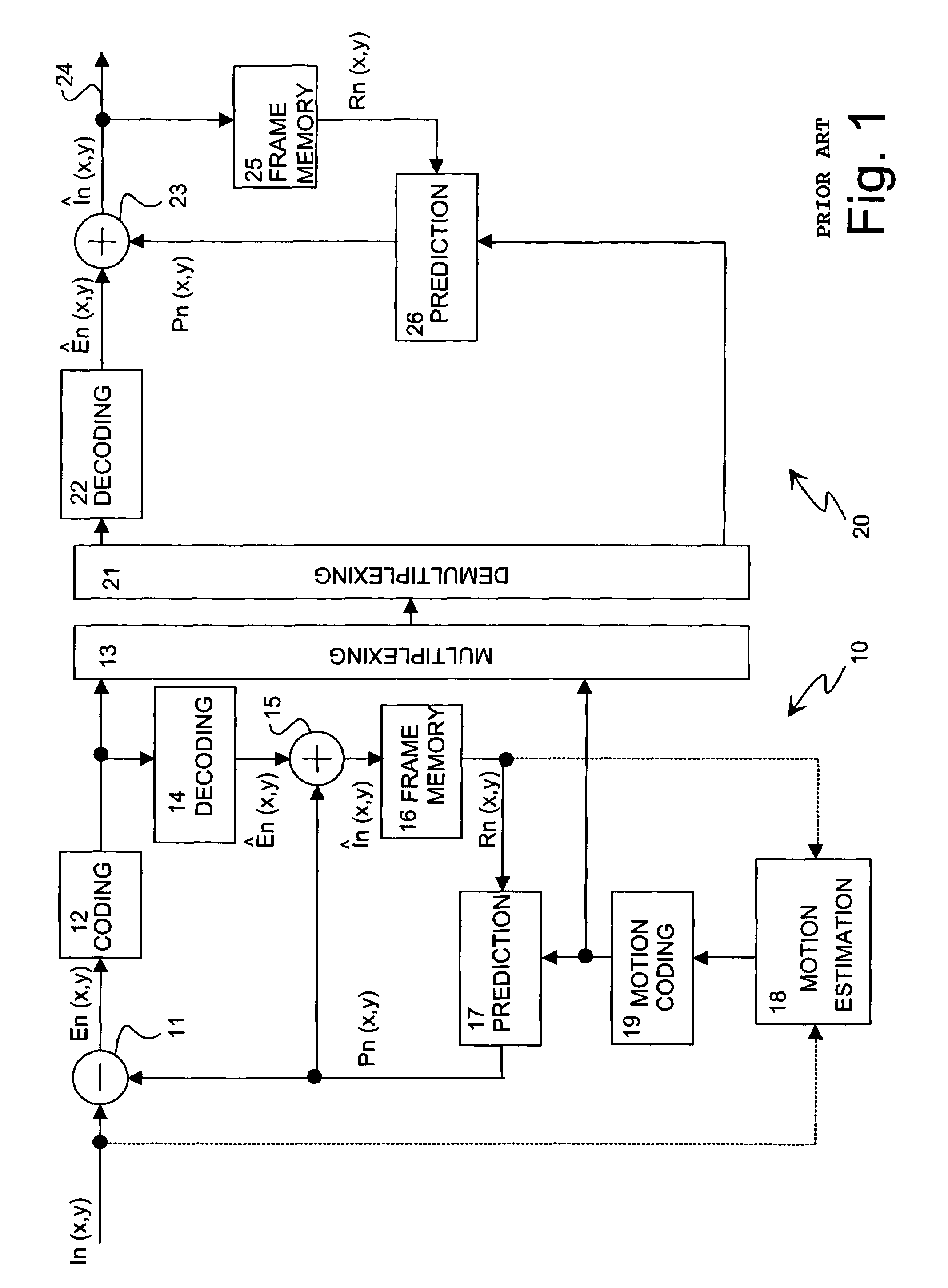Method for filtering digital images, and a filtering device
a digital image and filtering technology, applied in the field of digital image filtering and filtering devices, can solve the problems of significant technical problems relating to spatial and temporal propagation, inability to use motion compensation prediction when coding, and visible edges in the image reproduced by the receiver
- Summary
- Abstract
- Description
- Claims
- Application Information
AI Technical Summary
Benefits of technology
Problems solved by technology
Method used
Image
Examples
Embodiment Construction
[0052]In the following description of the invention and its preferred embodiments, reference will be made mostly to FIGS. 2 to 6.
[0053]In the following, the operation of a digital image decoder is described. In a digital image transfer system according to the invention, such as that illustrated in FIG. 5, the block and block boundary scanning order used in the encoder and decoder are the same, i.e. known to both encoder and decoder. However, the particular scanning order chosen is not essential for implementation of the method according to the invention. FIG. 2 shows an advantageous scanning order for a frame comprising groups of blocks, e.g. macroblocks. First, the top-left block B1 is decoded, i.e. pixel values representing e.g. the luminance information of the block are reconstructed and saved into a frame buffer. Then, the top-right block B2 is decoded and saved into the frame buffer. Now, the first vertical boundary R12 between the top-left block B1 and top-right block B2 has a...
PUM
 Login to View More
Login to View More Abstract
Description
Claims
Application Information
 Login to View More
Login to View More - R&D
- Intellectual Property
- Life Sciences
- Materials
- Tech Scout
- Unparalleled Data Quality
- Higher Quality Content
- 60% Fewer Hallucinations
Browse by: Latest US Patents, China's latest patents, Technical Efficacy Thesaurus, Application Domain, Technology Topic, Popular Technical Reports.
© 2025 PatSnap. All rights reserved.Legal|Privacy policy|Modern Slavery Act Transparency Statement|Sitemap|About US| Contact US: help@patsnap.com



